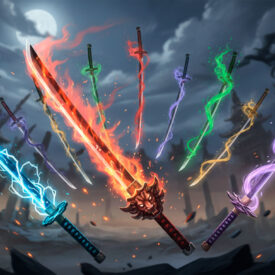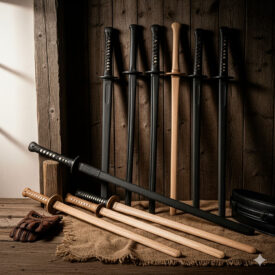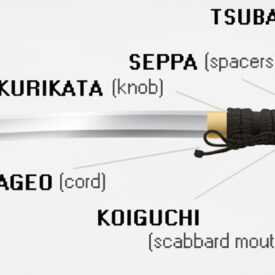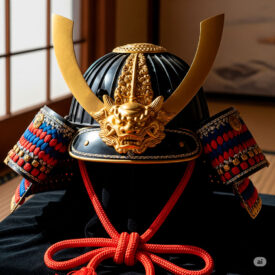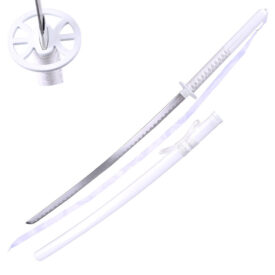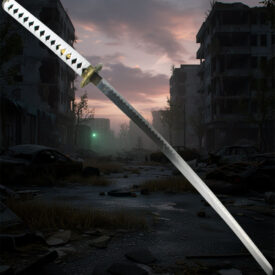Samurai katanas are much more than just a sword: they are witnesses to a culture, a technology, and a code of conduct that shaped feudal Japan. Why did the katana become the symbol of the Japanese warrior and what truly differentiates it from other swords in the world? In this detailed article, you will discover its history, how it is made, what types exist, how to care for them, and how to choose one according to your use—decorative, functional, or training—so you can make an informed decision.
The word katana evokes images of mounted warriors, precise cuts, and impeccable aesthetics. But behind that image are centuries of technical evolution, artisan tradition, and adaptation to the battlefield. Throughout the following sections, you will learn everything from the origin of the samurai to practical considerations for buying and maintaining a samurai katana.

Origin and History of the Samurai and Their Katanas
Samurai (or bushi) were the dominant military class in Japan for more than a thousand years. Originally warriors for hire by feudal lords, their influence grew to become the backbone of the political, social, and cultural power of the archipelago. Although they used various weapons—bows, spears, and firearms—the katana became synonymous with samurai identity.
The code of bushido (“the way of the warrior”) defined expected behavior: loyalty, discipline, honor, and strict ethical conduct. In extreme circumstances, some samurai preferred seppuku (ritual suicide) rather than dishonor. The katana, in these contexts, was both a tool and a spiritual symbol.
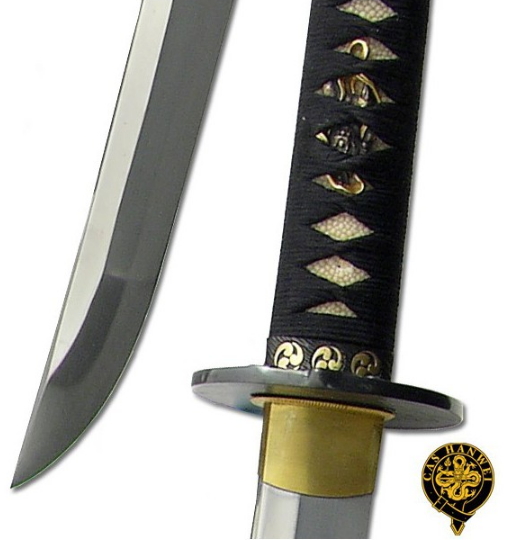
Key periods
- Heian (794-1185): Landowners employ private warriors; the first swords with their own identity emerge.
- Kamakura (1192-1333): Consolidation of the shogunate and professionalization of the samurai as administrators and warriors.
- Muromachi and Sengoku (1333-1573): Era of constant wars; demand for katanas rises and tactics and armaments change.
- Azuchi-Momoyama (1573-1603): Unification and social regulation; swords become the exclusive emblem of the samurai.
- Edo (1603-1868): Prolonged peace; samurai transform into bureaucrats and artists; sword production specializes and becomes an art.
In 1868, the Meiji Restoration ended the legal status of the samurai class and radically transformed Japanese society, although the culture of the weapon and honor persisted in other areas.
How a Katana Was Forged: Traditional Materials and Techniques
The manufacture of swords in Japan evolved from techniques imported from China and Korea towards a highly specialized and traditional workshop process. The first blades were straight, but the curved shape of the katana appeared due to practical needs: better cutting and adaptation to the Japanese combat style.
The modern katana is a curved, single-edged blade, forged and tempered to achieve a balance between hardness (to maintain the edge) and toughness (to prevent breaking). Classical forging involves repeatedly folding, welding, and hammering the steel to homogenize it and remove impurities. This process also generates the characteristic grain patterns of the steel, appreciated by collectors.

Fundamental steps in forging
- Steel selection: today modern steels or traditional steels like tamahagane are used.
- Forging and folding: repeatedly folding and welding to homogenize the metal and improve its structure.
- Differential tempering: applying clay to the blade to temper the harder edge and the more flexible back; this creates the hamon visible after polishing.
- Polishing: an artisanal task that can last for days and highlights the temper line and the grain of the metal.
- Assembly: mounting of the tsuba, tsuka, saya, and other decorative and functional elements.
Polishing and assembly are independent arts: one artisan sharpens and polishes the blade while others create the hilt, guard, and fittings. Since World War II, this chain has been affected by industrialization, but traditional smithing still exists in Japan.
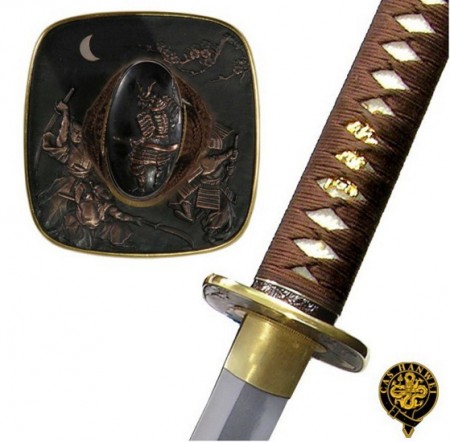
Terms and parts of the katana you should know
Understanding the terminology will help you evaluate a katana. Some key words:
- Ha: the edge.
- Mune: the back of the blade.
- Nakago: the tang, where the forger often signs their seal.
- Tsuba: guard or piece between handle and blade.
- Tsuka: the handle wrapped with tsuka-ito and adorned with menuki.
- Saya: the sheath that protects the blade.
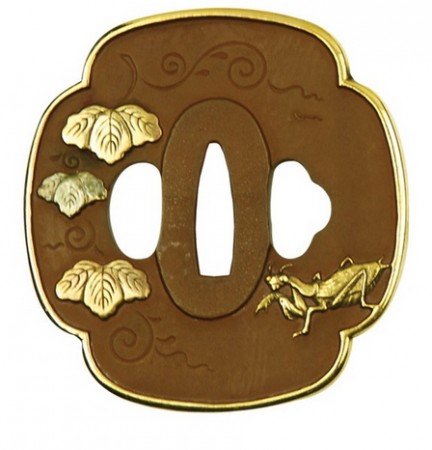
What makes the katana unique compared to other swords
The katana was designed for the Japanese context: combat with infantry, light cavalry, and armor distinct from European armor. Its curve favors cutting and quick drawing from the saya, a technique known as iai or iaido. In contrast to European swords, which often evolved to respond to heavier armor, the katana was perfected for a balance between agility and cutting effectiveness.
There is no need to romanticize: the katana does not cut through armor like in movies, nor is it indestructible. Its effectiveness depends on the use, material, and technique of the user. Many wars were also fought with spears and bows; the sword was often a weapon of last resort or a symbol of status.

Types of katanas: decorative, functional, and shinken
When buying a samurai katana, you should know what type you are looking for:
- Decorative: focused on appearance; they are usually inexpensive and not suitable for cutting or intensive practice.
- Functional: built for martial arts practices and tameshigiri (cutting through materials), they balance cost and performance.
- Shinken or traditional: swords traditionally forged by masters and with quality materials; they are the most expensive and appreciated by collectors.
| Type | Recommended use | Advantages | Approximate price |
|---|---|---|---|
| Decorative | Wall display | Aesthetics and low price | Low |
| Functional | Training and light cutting | Balance between quality and cost | Medium |
| Shinken (traditional) | Collection and serious use | Authentic materials and forging | High |
This table will help you identify which katana suits your needs. If you are looking for a balance for practice, prioritize carbon steel blades or steels forged with differential tempering; if you are looking for decoration, focus on the finish of the saya and the fittings.

Fantastic Dragon Samurai Katana
Maintenance and safety: how to care for a samurai katana
A well-maintained katana can last for centuries; if poorly cared for, it will deteriorate quickly. Here are essential practices:
- Regular cleaning: after handling, clean the blade with a soft cloth to remove oils and moisture.
- Oiling: apply specific mineral oil for swords to prevent rust.
- Storage: keep the katana in its saya in a dry and stable place; avoid hanging it in places with high humidity.
- Do not abuse: even functional katanas have limits; avoid hitting unsuitable objects and control your technique.
Abuse or use without training can cause fractures, nicks, or deformations. If you practice martial arts, consult with instructors and use appropriate protections and materials for tameshigiri.
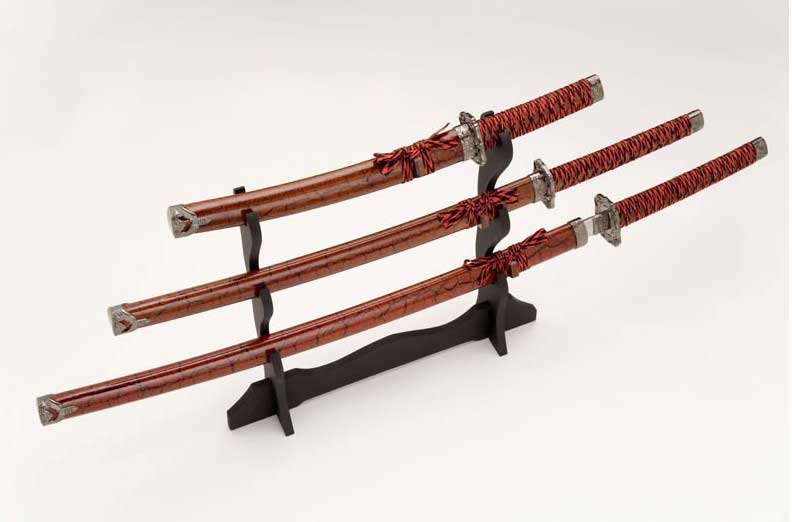
Katana, Wakizashi, and Tanto with Stand
Technical comparison: materials and performance
Understanding the materials will help you value a katana. Carbon steel provides sharpness and ease of sharpening; stainless steels are practical for decoration but less valued by purists. Traditional shinken use tamahagane and differential tempering.
| Material | Advantages | Limitations |
|---|---|---|
| Tamahagane (traditional) | Authenticity, artistic appearance, good temper | Very high price, artisanal work |
| Carbon steel (e.g., 1095) | Good edge retention, more affordable | Requires maintenance to prevent rust |
| Stainless steel | Corrosion resistant, low maintenance | Less traditional value and worse for serious tameshigiri |
The choice of material depends on the intended use: decoration, training, or collection. A collector will value the origin and the forging workshop; a practitioner will prioritize performance and durability.
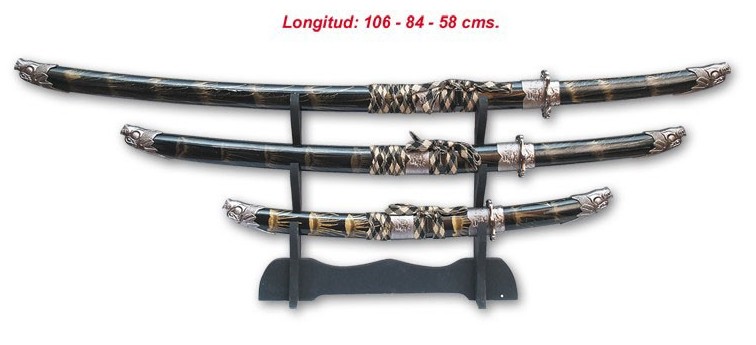
Katana, Wakizashi, Tanto, and Stand
Katanas práctica básica
Katanas práctica estándar
Katanas práctica intermedia
Katanas práctica superior
To buy samurai katanas, the safest bet is to go to specialized stores that offer information on materials, forging processes, and guarantees. If you need a specific recommendation, only buy from our online store: Medieval-Shop
When evaluating an offer, ask about:
- Blade material and tempering method.
- Origin and forger’s signature (if applicable).
- Type of mounting and quality of the saya and tsuka.
- Return policy and warranty.
If you are looking for an exhibition piece, aesthetics and price will be key. If you are looking for a tool for training, prioritize functionality and buy from sellers who allow you to verify the blade and test safe techniques with qualified instructors.
Common questions answered within the text
There are no historical “ninja straight swords” like those sold by Hollywood: many versions are modern or mythified products. Nor should one believe that folding steel hundreds of thousands of times is always better; traditional folding removes impurities and creates patterns, but material quality and tempering are decisive.
Regarding whether a katana cuts through armor: a katana is designed to cut fabric and attack weak points, not to pierce plates. In real combat, polearms and ranged weapons were prioritized; the sword was, many times, the last resort.

Final considerations
Understanding samurai katanas requires combining history, technique, and practical sense. Not all swords are the same: their value lies in who forged them, how they were made, and what they are used for. Research, ask questions, and if you decide to buy, prioritize trusted sellers and pieces with clear technical information.
Whether you are looking for a decorative katana, a functional one for training, or a traditional shinken, apply criteria of material, temper, and mounting. Care for your katana with proper cleaning, oiling, and storage, and remember that technique always surpasses the object: a good sword in inexperienced hands does not replace training.
VIEW DECORATIVE, FUNCTIONAL AND MOVIE KATANAS | VIEW MORE JAPANESE SWORDS


